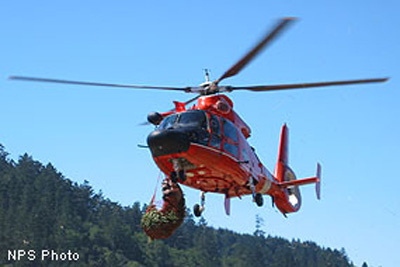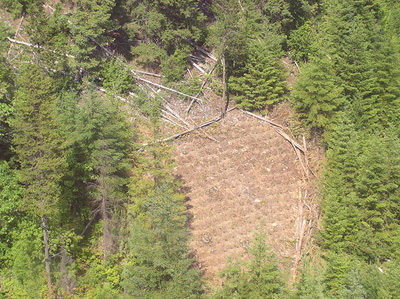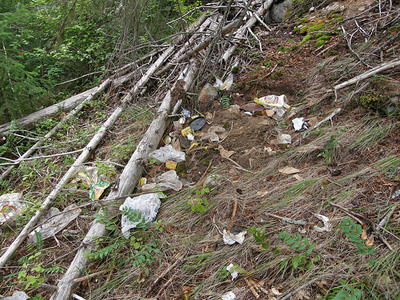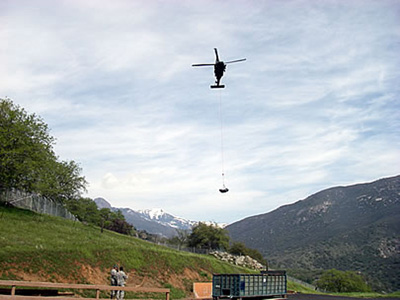
Marijuana growers bring risk to parks
In December 2010, the House of Representatives passed a bill, H. Res. 1540, which was directed to the White House to set up a plan to stop drug cartels from growing marijuana in national parks.
Although there is a 1996 state law in California that authorizes medical marijuana production, most of them are still illegal.
| Click on the video at the left to view an audio slideshow about problems related to marijuana being illegally grown in national parks and forests narrated and prepared by writer Daniela Vincentini. |
“Our main concern is preserving our parks for the future generations, but unfortunately people keep doing illegal activities for personal gain, and are really hurting the environment and the parks. The traffickers cut down trees and divert waterways, they pollute, and throw trash wherever they please without any concern whatsoever to the surrounding green areas and our mission here is to protect it,” said Yosemite National Park Deputy Chief Ranger Kevin Killian.
The most common problem with growing marijuana in parks is the substantial amounts of toxic pesticides, chemicals and fertilizers that the drug traffickers use.
| At right, National park officials use helicopters to airlift trash and confiscated marijuana away from the affected areas (Photos courtesy of the National Park Service). |  |
“Fertilizers are definitely a main concern and the irrigation hoses that go for miles and miles along the parks. Other objects that we find are personal possessions, such as tents, food, trash, and alcohol. Shovels, rakes, any gardening instruments are usually found around the marijuana farms too. What cause pollution are the pesticides, fertilizers, herbicides, propane in cans, and the white gas (camping fuel.) Unfortunately there have been signs of poaching; we have found dead deer and bears in our park. We have also found ammunitions and weapons, which can be hazardous for park visitors,” said Killian.
There is a significant danger in the park due to traffickers, because they place booby traps with live shotgun shells on marijuana plantations, which can be a hazard to any one who comes near, whether it is a person or an animal.
“The first thing we do as a team is a surveillance of the area to make sure there aren’t any armed traffickers in sight. We check for booby traps and any other type of potential hazards to the public and our park rangers,” said Kevin Hendricks, chief park ranger at Sequoia and Kings Canyon National Park in California.
 |
At left, drug traffickers destroyed acres of forest to plant marijuana farms on national parks. Next, pollution is one of the greatest problems with marijuana farms. Food and trash left behind by the traffickers. Last, Kevin Hendricks, chief park ranger at Sequoia and Kings Canyon National Park, said “our biggest helpers are our choppers.” |
“We usually use search teams of people and not with animals such as dogs because they help us find more specific types of drugs such as processed marijuana or even cocaine,” Killian said.
In Oct. 8, 2000, an 8-year-old boy and his father were shot by drug traffickers while hunting in El Dorado National Forest in Northern California.
Another case was on June 16, 2009, were a couple of law enforcement officers with the Lassen County Sheriff’s Department in  California, were wounded by gunfire from the traffickers during an investigation of a plantation on Bureau of Land Management property.
California, were wounded by gunfire from the traffickers during an investigation of a plantation on Bureau of Land Management property.
“With accidents like these we don’t want visitors getting involved, we want them to extract themselves from the dangers of the situation. They are enough help by reporting any suspicious activity going on. An example could be and excessive foot traffic on an area where there is no visible trail or people carrying tools with suspicious behavior,” said Hendricks.
The traffickers plant the marijuana beneath the bushy areas in parks; pot gardens are hidden inside trailers, closets, attics, basements and spare bedrooms too.
According to Hendricks, “Our biggest helpers are our choppers. We can cover a far more extensive piece of land in less time.”
“For our wildlife the problem is that the traffickers leave out food, so when bears see this food an associate it with people, then they become more aggressive. The consequences of this is that bears then see park visitors and think they have food and might attack them or scare the visitors away and we don’t want anyone getting hurt,” said Killian.
 Another one of the problems of growing marijuana is the amount of light needed to grow them indoors. The ones in more rural locations use large diesel generators for power, which are often homemade and are huge risks for fires and spills.
Another one of the problems of growing marijuana is the amount of light needed to grow them indoors. The ones in more rural locations use large diesel generators for power, which are often homemade and are huge risks for fires and spills.
“The thing is that we don’t have much experience with this problem because it has been the only one we have been aware of. It happened only a few years ago in a five-acre lot and this park is over 1.000 square miles.
“Folks are concerned with the environmental impacts that these plantations have caused, but since we haven’t had much of problematic activity then there hasn’t been a notable issue at this moment,” said Roy Zipp an environmental protection specialist at North Cascades National Park in Washington.
The main reason that pot farms are on public land is because it is easy to get away from law enforcements.
“What separates us from other parks is that we are in the border with Canada, so not only do we have park rangers or law enforcements, but we also have border and immigration patrols who are on the highway protecting our parks. They keep the area under constant surveillance and probably cover more area than our rangers,” said Zipp.

Comments are Closed